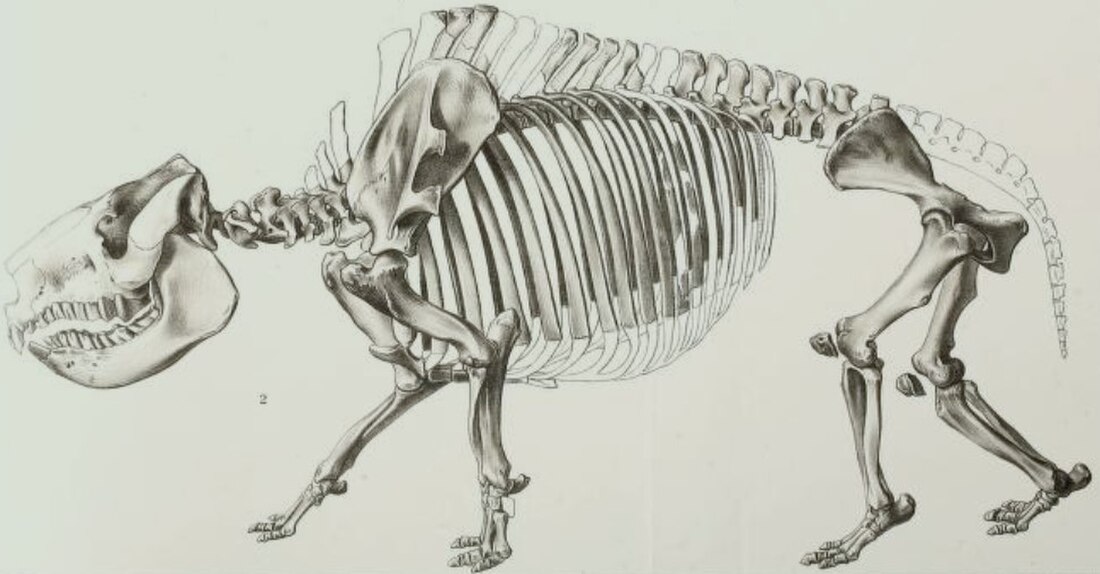Top Qs
Timeline
Chat
Perspective
Nesodon
Extinct genus of notoungulates From Wikipedia, the free encyclopedia
Remove ads
Nesodon ("island tooth")[3] is a genus of Miocene mammal belonging to the extinct order Notoungulata which inhabited southern South America during the Late Oligocene to Miocene living from 29.0 to 16.3 Ma and existed for approximately 12.7 million years. [4] It had a relatively large size, weighing up to 554 kg (1221 lbs) and reaching 1.5 m in height.[5]
You can help expand this article with text translated from the corresponding article in Italian. (June 2022) Click [show] for important translation instructions.
|
Remove ads
Taxonomy

Nesodon was named by Owen (1846). It was assigned to Toxodontidae by Carroll (1988). It was an early member of the family Toxodontidae, which included the well-known Pleistocene genus Toxodon. Like almost all toxodontids, Nesodon was endemic to South America. In particular, fossils of Nesodon are known from late early Miocene (Santacrucian SALMA) deposits of Argentina and Chile.[6]
Three species of Nesodon are recognized including a larger species, N. imbricatus, and a smaller species, N. conspurcatus.[7] A poorly known and possibly invalid third species, N. cornutus, was similar to N. imbricatus but may have had a small horn on its head. All species of Nesodon were larger than species of the contemporary toxodontid Adinotherium.
The dentition of Nesodon shows features typical of living grazing (grass-eating) mammals, but a study of wear on the enamel of N. imbricatus suggests that it was a browser (leaf eater) that may have supplemented its diet with fruit or bark.[8]
Remove ads
Classification

In 2014, a study identifying a new species of Nesodon, N. taweretus, resolved the families phylogenetic relations, deriving the cladogram shown below:[9]
| |||||||||||||||||||||||||||||||||||||||||||||||||||||||||||||||||||||||||||||||||||||||||||||||||||||||||||||||||||||||||||||||||||||
Remove ads
Distribution
Fossils of Nesodon have been found in:[10]
- Deseado and Santa Cruz Formation, Argentina
- Chucal and Río Frías Formations, Chile
References
Wikiwand - on
Seamless Wikipedia browsing. On steroids.
Remove ads


